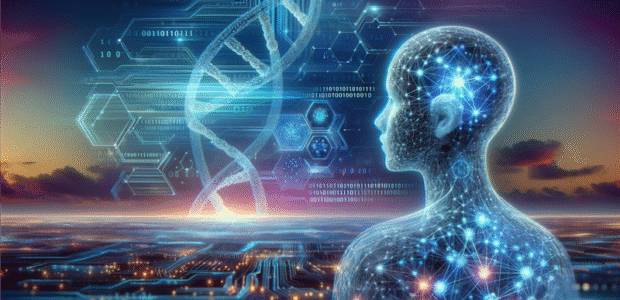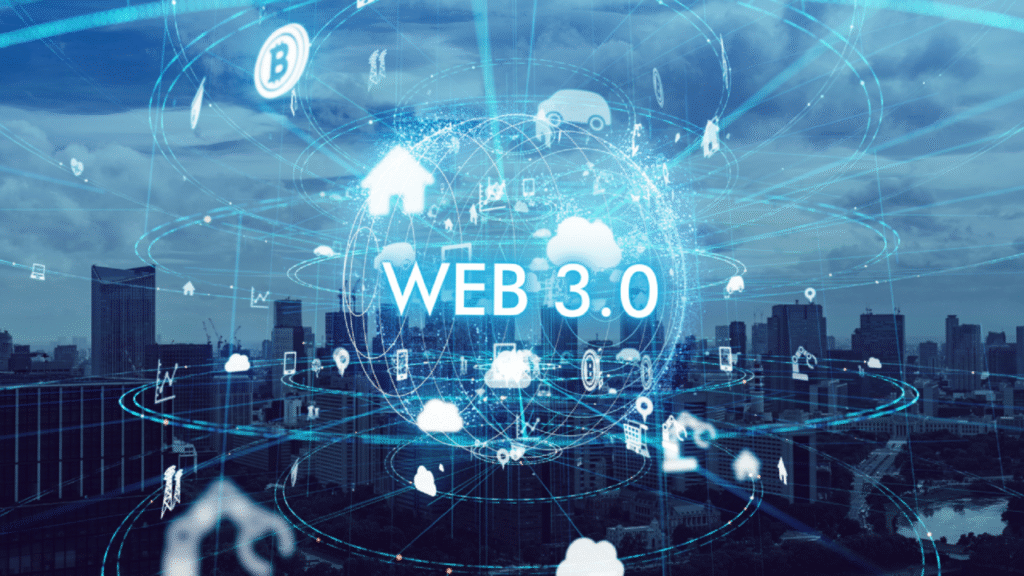
Decentralized Internet: How Web3 Is Reshaping Digital Infrastructure
Posts by RichardJune 4, 20250 Comments
Ever feel like the internet, for all its wonders, is a bit… centralized? Like a few big players hold all the cards, and our data is constantly whizzing through servers owned by someone else? You’re not alone. For years, the internet has operated on a client-server model, a highly efficient but inherently centralized structure. But what if there was another way? What if the internet could be truly decentralized, powered by the collective rather than a select few?
Welcome to the fascinating world of Web3, often hailed as the next evolution of the internet It’s not just a buzzword; it’s a fundamental shift in how we interact with online services, own our data, and even govern digital communities. Forget the idea of a few monolithic entities controlling everything; Web3 aims to put power back into the hands of individual users. This article will dive deep into what a decentralized internet truly means and how Web3 is actively reshaping the digital infrastructure we’ve come to rely on.
The Internet We Know: A Quick Recap of Web2
Before we leap into the future, let’s take a moment to understand the present — and the recent past. The internet as most of us know it – often referred to as Web2 – is characterized by platforms like social media giants, cloud storage providers, and e-commerce behemoths. These services offer incredible convenience and connectivity, but they come with a trade-off: centralization.
In Web2, your data is stored on company servers. This means:
- Vulnerability: A single point of failure can disrupt services or expose vast amounts of user data.
- Censorship: Companies can control what content is accessible or removed.
- Data Ownership: While you create your data, the platform often holds significant control over how it’s used and monetized.
- Intermediaries: Every transaction, every interaction, goes through a third party.
Think about it: when you upload a photo to social media, that photo now lives on their servers. When you stream a movie, you’re accessing it from a centralized content delivery network. This model has fueled immense innovation but has also led to growing concerns about privacy, security, and digital freedom.

The Promise of Decentralization: Enter Web3
This is where Web3 steps in, offering a radical alternative: decentralization. At its core, Web3 leverages technologies like blockchain, peer-to-peer networks, and cryptography to create an internet where control is distributed rather than concentrated. Imagine a network where instead of one giant server, there are thousands, even millions, of interconnected computers, each contributing to the network’s operation and security.
How Does Web3 Achieve Decentralization?
The magic behind Web3 lies in several key technological innovations:
- Blockchain Technology: The backbone of Web3, blockchains are distributed, immutable ledgers. IInstead of relying on a central database, transactions and data are recorded across a network of computers, making them transparent and tamper-proof. This distributed structure eliminates the need for a central authority to verify transactions.
- Cryptocurrency and Tokens: Digital currencies and tokens facilitate transactions and reward participation within decentralized networks. They incentivize users to contribute resources and maintain the network’s integrity.
- Smart Contracts: Self-executing agreements stored on a blockchain, smart contracts automatically carry out terms without the need for intermediaries.
- Decentralized Applications (dApps): These are applications built on decentralized networks, running on peer-to-peer infrastructure rather than centralized servers. Think of social media platforms, gaming, or financial services, but where the control is distributed among users.
- Peer-to-Peer Networks: Instead of relying on a central server, data and information are directly exchanged between users. This makes the network more resilient and less susceptible to censorship.
Image Suggestion 1: An infographic illustrating the difference between Web2 (centralized cloud with many users pointing to it) and Web3 (a distributed network of interconnected nodes). Alt Text: Web2 vs. Web3 comparison illustrating centralized and decentralized internet architectures.
Reshaping Digital Infrastructure: Real-World Impacts
The implications of Web3 for digital infrastructure are profound, touching upon various aspects of our online lives.
Data Ownership and Privacy
One of the most exciting shifts Web3 promises is true data ownership. Instead of granting companies permission to use and monetize your data, Web3 aims to give you direct control. This could mean:
- Self-Sovereign Identity: You own and manage your digital identity, selectively disclosing information as needed.
- Personal Data Wallets: Securely store and manage your personal data, granting access only when you choose.
- Monetizing Your Data: Potentially, you could even earn a share of the value generated from your data if you choose to share deepdiveinsight
Enhanced Security and Resilience
A decentralized network is inherently more resilient to attacks and outages. Without a single point of failure, it is extremely difficult to shut down or compromise the entire system
- Censorship Resistance: It becomes much harder for any single entity to censor content or restrict access to information.
- Reduced Data Breaches: Spreading data across a vast network makes it a less attractive target for large-scale data breaches.
New Economic Models and Creator Economy
Web3 is fostering innovative economic models that empower creators and users:
- Play-to-Earn Gaming: Gamers can earn valuable in-game assets and even cryptocurrencies by playing.
- Decentralized Finance (DeFi): Financial services like lending, borrowing, and trading are offered without traditional banks or intermediaries.
- NFTs (Non-Fungible Tokens): Digital assets that prove ownership of unique items, empowering artists and creators to directly monetize their work.
For those interested in exploring these new economic models and finding ways to participate, resources like deepdiveinsight.com offer valuable insights into the evolving digital landscape. You might even find some exciting opportunities to get involved and potentially save on new ventures by checking out https://www.google.com/search?q=coupons.deepdiveinsight.com.
Democratizing Governance
Beyond data and finance, Web3 is also transforming how digital platforms are governed. Decentralized Autonomous Organizations (DAOs) are emerging as a new way to collectively manage projects and protocols. In a DAO, decisions are made by token holders, giving a voice to the community rather than a central authority. This fosters greater transparency and user involvement in the direction of online services.
Image Suggestion 2: A visual representation of a DAO with various user avatars connected by lines to a central “decision” node, symbolizing collective governance. Alt Text: Decentralized Autonomous Organization (DAO) illustrating community-driven governance in Web3.

Challenges and the Road Ahead
While the promise of Web3 is immense, it’s important to acknowledge the challenges that lie ahead.:The technology is still in its nascent stages, and there are several hurdles to overcome, including scalability, regulatory challenges, and mainstream adoption
- Scalability: Ensuring decentralized networks can handle the immense traffic of a global internet.
- User Experience: Simplifying complex cryptographic concepts and making Web3 applications as user-friendly as their Web2 counterparts.
- Regulatory Uncertainty: Governments worldwide are still grappling with how to regulate this rapidly evolving space.
- Environmental Concerns: The energy consumption of some blockchain consensus mechanisms is a significant concern, though greener alternatives are emerging.
Despite these challenges, the momentum behind Web3 is undeniable. Developers, entrepreneurs, and users are actively building, experimenting, and refining the infrastructure that will define the next era of the internet. The shift towards a decentralized future isn’t just about technology; it’s about re-imagining our relationship with the digital world, fostering greater autonomy, and building a more equitable and resilient online experience for everyone. The decentralized internet is not a distant coupons.deepdiveinsightdream; it’s being built right now, piece by digital
Frequently Asked Questions
1. What is the fundamental difference between Web2 and Web3?
The core difference lies in control and ownership. Web2 is characterized by centralization, where large corporations own and control user data and platforms. Web3, on the other hand, aims for decentralization, giving users more control over their data, identity, and participation in online networks through technologies like blockchain.
2. How will Web3 impact my everyday internet usage?
While Web3 is still evolving, its impact will likely manifest in several ways. You might experience greater privacy and control over your personal data, interact with new types of applications (dApps) that offer novel incentives, and even participate in the governance of online platforms you use. Over time, the goal is for these underlying shifts to create a more secure, fair, and user-centric internet experience.
3. Is Web3 only about cryptocurrencies?
No, while cryptocurrencies are an integral part of many Web3 ecosystems as a means of incentivization and value transfer, Web3 encompasses a much broader range of technologies and applications. It’s about building a decentralized internet infrastructure, including decentralized applications (dApps), self-sovereign identity, and new forms of digital ownership (like NFTs), all built on technologies like blockchain and peer-to-peer networks.
4. What are some real-world examples of Web3 in action?
Currently, you can see Web3 in action through decentralized finance (DeFi) platforms that offer lending and borrowing without traditional banks, play-to-earn games where players own and trade in-game assets, and various NFT marketplaces where digital art and collectibles are bought and sold. Additionally, decentralized autonomous organizations (DAOs) are emerging as a new way to govern projects and communities online.
5. How can I learn more about Web3?
There are many resources available online to learn more about Web3. Reputable tech news sites, blockchain education platforms, and academic research papers are great starting points. Websites like Ethereum.org offer excellent foundational knowledge, and CoinDesk provides up-to-date news and analysis on the broader crypto and Web3 space.
